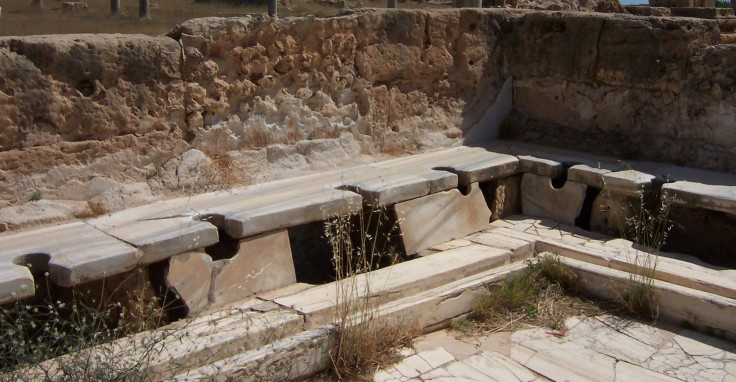Ancient Roman Bathhouses Were Actually Very Unclean, Spread Around Intestinal Parasites

Modern-day bathrooms are actually pretty clean (though not as clean as the International Space Station) in comparison to two thousand years ago. The Roman Empire was conquering huge swaths of Europe at the same time it was introducing sanitation technology, like multi-seat toilets, sewage systems, drinking water from aqueducts, and heated public baths. While all of this was thought to improve living conditions, a new study published in Parasitology reveals that wasn't the case at all.
Dr. Piers Mitchell, from the archaeology and anthropology department at Cambridge, led the research team who found out of all the innovations the Romans brought to Europe, intestinal parasites, like whipworm, roundworm and Entamoeba histolytica, were least appreciated. Reports show rates of dysentery wherever Romans could be found. The study used archaeological evidence to determine the increase in intestinal parasites, which meant digging up latrines, human burials, combs and clothes from other archaeological digs across the known Roman Empire, and even fossilized human feces. According to the authors, the study is the first of its kind to use archaeological evidence to determine what the health consequences were when building an empire.
"Modern research has shown that toilets, clean drinking water and removing [feces] from the streets all decrease risk of infectious disease and parasites," Mitchell said in a press release. "So we might expect the prevalence of fecal oral parasites such as whipworm and roundworm to drop in Roman times — yet we find a gradual increase. The question is why?"
Despite the widespread belief Romans led exceptionally clean lives, Mitchell and his team found certain intestinal parasites increased as the Romans arrived; and other parasites, like lice and fleas, were not unlike those running rampant in less-civilized Viking populations, where Roman hygiene practices had yet to reach.
To answer his own question as to why the increase occurred, Mitchell suggests it could be a result of the warm water Romans drew for communal baths. According to experts, warm, moist areas are ideal for parasites. Infections spread when people come into contact with the water through swimming, bathing, or drinking.
What's more is Mitchell found not all Roman baths were as clean as advertised: Bath water was left unchanged and scum residue could be seen on the surface.
Another possibility, Mitchell poses, is the Romans' inclination to use human excrement as fertilizer. For thousands of years, human excrement was used this way, but it needed to be composted for a long time before it could be used safely — a practice Mitchell believes the Romans didn't follow. Not composting excrement would mean parasitic eggs growing on the crops they'd eat (and defecate) before heading over to the local bathhouse to bathe in probably unclean water; a nasty cycle, indeed.
If so many Romans were getting infected, how did they treat themselves? According to Mitchell, research shows Roman medical practitioner Galen prescribed a change of diet, bloodletting, and medicine.
"This latest research on the prevalence of ancient parasites suggests that Roman toilets, sewers and sanitation laws had no clear benefit to public health,” Mitchell concluded. “The widespread nature of both intestinal parasites and ectoparasites such as lice also suggests that Roman public baths surprisingly gave no clear health benefit either."
Source: Mitchell P. Human parasites in the Roman World: health consequences of conquering an empire. Parasitology. 2016.
Published by Medicaldaily.com



























